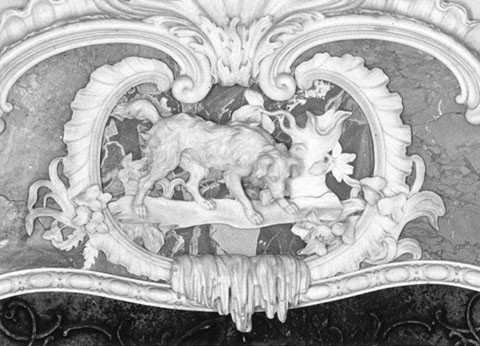
Detail of a mantlepiece from Woodcote Park, Surrey England; attributed to Sir Henry Cheere, England, ca. 1750. Marble. (Courtesy, Museum of Fine Arts, Boston. Reproduced with permission. ©2000 Museum of Fine Arts, Boston. All rights reserved. Gift of Eben Howard Gay, 27.462.) The room and mantel of the house are both in the Museum of Fine Arts, Boston.
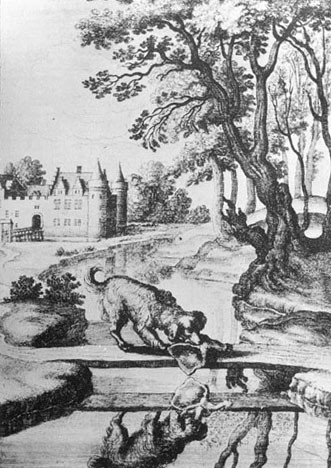
Engraving of “The Dog and Shadow” in Wencelaus Hollar, Aesop Paraphras’d (London, 1665). (Courtesy, Peabody Library, Baltimore.)
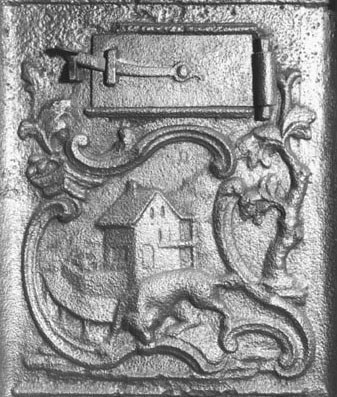
Front plate of a ten-plate stove, marked “H. W. STIEGEL/ 1769/ELIZABETH FURNACE,” Lancaster County, Pennsylvania, ca. 1769. (Courtesy, Hershey Museum, Hershey, Pennsylvania.) Courtenay undoubtedly carved the pattern in Philadelphia
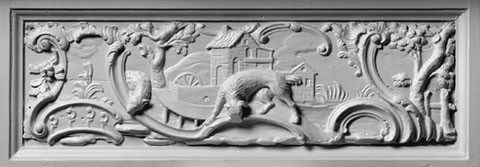
Detail of the tablet on the chimneypiece from the parlor of Samuel Powel’s townhouse, Philadelphia, 1770. Pine. (Courtesy, Philadelphia Museum of Art.) Between August and October 1770, Powel paid Courtenay £60 for carving in his “dwelling” (Samuel Powel Ledger, 1760–1793, Library Company of Philadelphia). The chimneypiece is in the Philadelphia Museum of Art.

Francis Barlow, “The Dog and the Meat,” from Aesop’s Fables, 2d ed. (London, 1687). Etching. (By permission of the Houghton Library, Harvard University.)
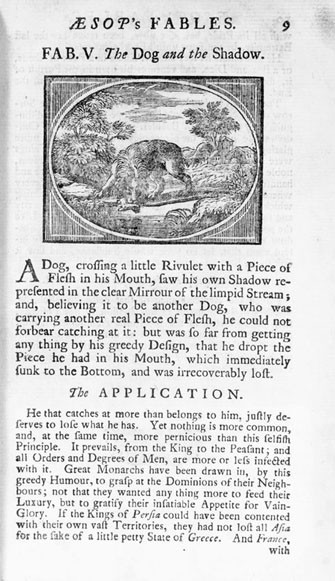
Elisha Kirkall, “The Dog and the Shadow,” from Dr. Samuel Croxall, trans., Aesop’s Fables, 1st ed. (London, 1722). Metal cut in white line. (Private collection.)

Design for a “French” chair on plate 22 of Thomas Chippendale’s Gentleman and Cabinet-Maker’s Director, 3d. ed. (London, 1762).

Kirk, playing card depicting “The Dog and Piece of Flesh,” London, 1759. Engraving. (Courtesy, United States Playing Card Collection.)
